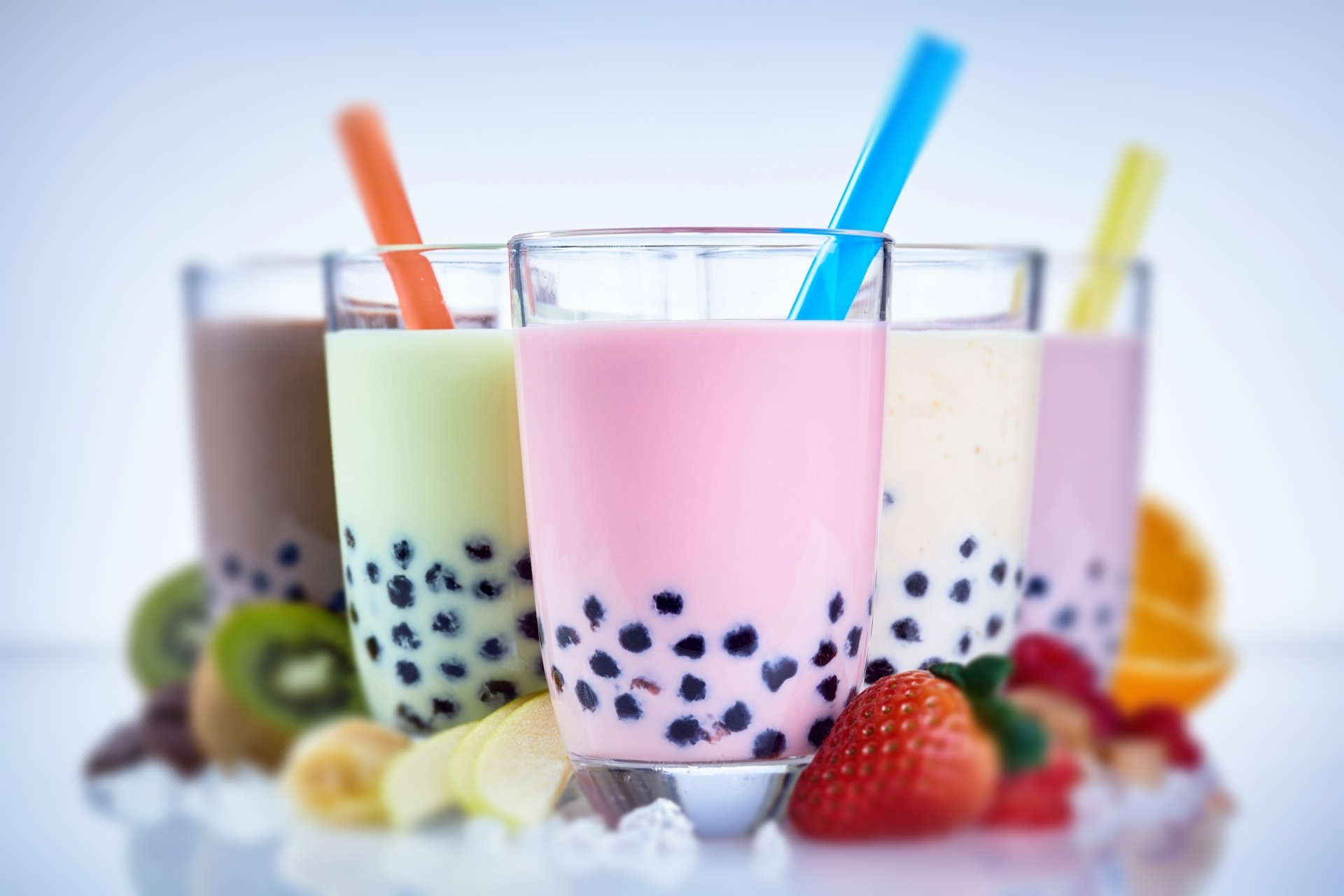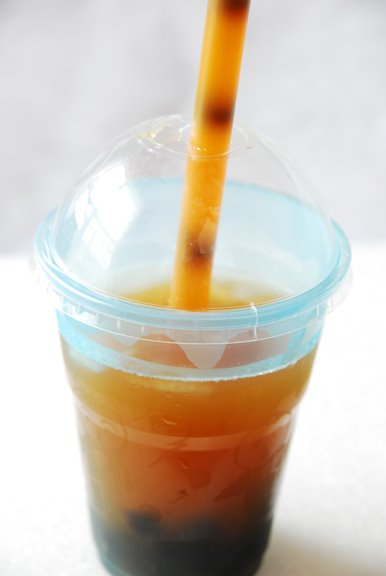
/bubble-tea-recipe-694162-hero-02-e428d92163814642903b12c5ac14de24.jpg)
These are made with seaweed extract and contain a flavour which is released as they pop in your mouth. Though traditional chewy tapioca balls are delicious, Bubble Tea, and fruity varieties in particular, is often garnished with popping balls.

White tapioca balls have the same consistency but lack the initial brown sugar taste of brown tapioca pearls and are therefore chosen to impart texture rather than taste. Naturally translucent in colour, they derive their colour from the brown sugar used to flavour them. The traditional tapioca balls are made from tapioca starch, which is derived from cassava root. To pair with the varied flavours of the tea bases, there are many toppings to choose from. Matcha and Taro have proved to be popular flavour incorporations in their own right, with their distinctive green and purple hues respectively. Fruity milk tea powders, such as mango and lychee, are available, too, and popularly paired with brown sugar tapioca pearls. Jasmine green tea, for example, is used as the base for fruity teas and mixed with flavoured syrups before being shaken and poured over fruity popping balls. Today, a huge range of flavours are available in a much larger variety of forms. Snowballing from the original milk tea with tapioca ball topping, we see the utilisation of and experimentation with all manner of different tea bases over the years. The evolution of Bubble Tea, then, was rapid. Taiwanese food historian Tseng Pin Tsang confirms that “Bubble tea is a successful example of recreating a traditional food” and, as such “, has become a symbol of Taiwanese’s self-confidence and identity.” How Is Bubble Tea Prepared? Milk tea with tapioca balls straddled this transitionary period, elegantly combining traditional Taiwanese artisanal techniques and cultural experiences with a fun modern twist. The trend of tea beverages coincided with the rise in popularity of leisure food in the 1980s, as Taiwan experienced economic growth. Eventually, one employee added tapioca balls to milk tea, creating what we now know as Bubble Tea, but which was then referred to as tapioca tea.įrom that point onwards, Bubble Tea experienced exponential growth, it was reflective of a turning point in Taiwan, and a feeling that society was modernizing. Understanding that any hot tea could be chilled by shaking it with ice, workers experimented with recipes and combinations, inspired by the historical tendency of people to add fruit to their tea for flavour variation. The method of chilling the tea, by shaking it with sugar and ice, would leave a layer of frothy foam atop the liquid, hence the observation of ‘bubbles’. The name ‘Bubble Tea’, she explains, came originally from the first iced black tea to be invented in Taiwan in around 1983.

In an interview with Taiwan Insider, Chun Shui Tang general manager Angela Liu explains how the iconic beverage was conceived. In fact, Bubble Tea’s origins are traceable precisely, to the 1980s, and a Taichung tea shop called Chun Shui Tang. Not only is the sweet drink popular in Taiwan, it also finds its roots in Taiwanese culinary tradition. Taiwan’s most popular beverage, Bubble Tea, is a tea-based drink often served with flavourful popping boba, or chewy tapioca pearls.


 0 kommentar(er)
0 kommentar(er)
